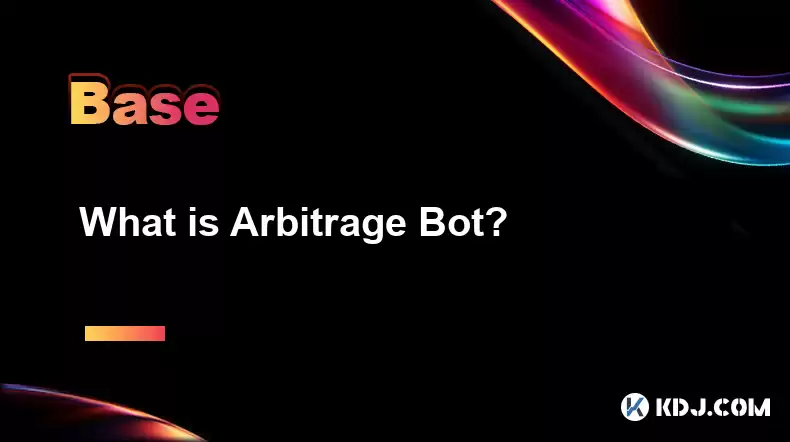-
 Bitcoin
Bitcoin $119300
1.07% -
 Ethereum
Ethereum $3730
3.87% -
 XRP
XRP $3.235
0.29% -
 Tether USDt
Tether USDt $1.000
0.00% -
 BNB
BNB $783.5
1.88% -
 Solana
Solana $188.7
0.25% -
 USDC
USDC $0.0000
-0.01% -
 Dogecoin
Dogecoin $0.2399
-0.44% -
 TRON
TRON $0.3157
2.37% -
 Cardano
Cardano $0.8254
1.94% -
 Hyperliquid
Hyperliquid $42.83
0.14% -
 Stellar
Stellar $0.4372
3.21% -
 Sui
Sui $3.859
4.91% -
 Chainlink
Chainlink $18.53
3.53% -
 Hedera
Hedera $0.2464
0.01% -
 Bitcoin Cash
Bitcoin Cash $519.8
2.46% -
 Avalanche
Avalanche $24.24
2.17% -
 Litecoin
Litecoin $113.7
0.73% -
 UNUS SED LEO
UNUS SED LEO $8.990
0.30% -
 Shiba Inu
Shiba Inu $0.00001390
0.21% -
 Toncoin
Toncoin $3.188
1.49% -
 Ethena USDe
Ethena USDe $1.001
0.02% -
 Polkadot
Polkadot $4.090
-0.91% -
 Uniswap
Uniswap $10.40
4.08% -
 Monero
Monero $326.6
3.12% -
 Bitget Token
Bitget Token $4.627
-0.42% -
 Pepe
Pepe $0.00001281
0.76% -
 Dai
Dai $1.000
0.01% -
 Aave
Aave $291.6
0.98% -
 Cronos
Cronos $0.1269
7.26%
What is Arbitrage Bot?
Arbitrage bots exploit price differences of cryptocurrencies across exchanges, automating trades to profit from discrepancies, but face risks like market volatility and fees.
Apr 08, 2025 at 06:00 am

An arbitrage bot is a type of software designed to exploit price differences of the same asset across different cryptocurrency exchanges. These bots automatically buy the asset at a lower price on one exchange and sell it at a higher price on another, thereby generating a profit from the price discrepancy. The concept of arbitrage is not new, but the automation provided by these bots has made it more accessible and efficient for traders in the cryptocurrency market.
How Does an Arbitrage Bot Work?
An arbitrage bot operates by continuously monitoring the prices of cryptocurrencies across multiple exchanges. When it detects a significant price difference for the same asset, it executes trades to capitalize on this difference. Here's a detailed breakdown of the process:
- Price Monitoring: The bot uses APIs to fetch real-time price data from various exchanges. It compares these prices to identify any arbitrage opportunities.
- Trade Execution: Once an opportunity is identified, the bot places buy orders on the exchange with the lower price and sell orders on the exchange with the higher price.
- Profit Calculation: After the trades are executed, the bot calculates the profit made from the arbitrage, accounting for transaction fees and other costs.
- Fund Management: The bot manages the funds across different exchanges, ensuring that there are sufficient assets available to execute trades when opportunities arise.
Types of Arbitrage Bots
There are several types of arbitrage bots, each designed to exploit different kinds of arbitrage opportunities:
- Simple Arbitrage Bots: These bots focus on the most straightforward form of arbitrage, where they buy and sell the same cryptocurrency on different exchanges.
- Triangular Arbitrage Bots: These bots exploit price differences between three different cryptocurrencies on a single exchange. For example, they might convert BTC to ETH, ETH to LTC, and then LTC back to BTC, profiting from the discrepancies in these conversion rates.
- Cross-Exchange Arbitrage Bots: These bots take advantage of price differences for the same cryptocurrency across different exchanges, similar to simple arbitrage bots but often involving more complex strategies.
- Statistical Arbitrage Bots: These bots use statistical models to identify and exploit price discrepancies that are not immediately obvious, often involving pairs trading or other advanced techniques.
Benefits of Using Arbitrage Bots
Using an arbitrage bot can offer several advantages to cryptocurrency traders:
- Automation: Arbitrage bots automate the process of identifying and executing trades, saving time and reducing the need for constant market monitoring.
- Efficiency: Bots can execute trades much faster than humans, allowing them to capitalize on fleeting arbitrage opportunities.
- Consistency: Bots operate based on predefined rules and algorithms, ensuring consistent trading strategies without the influence of human emotions.
- Scalability: With the right setup, arbitrage bots can handle multiple trades across numerous exchanges simultaneously, increasing potential profits.
Risks and Challenges
While arbitrage bots offer significant benefits, they also come with certain risks and challenges:
- Market Volatility: Cryptocurrency markets are highly volatile, and price differences can disappear quickly, leading to potential losses if trades are not executed in time.
- Exchange Fees: Transaction fees can eat into the profits from arbitrage, especially if the price differences are small.
- Technical Issues: Bots rely on stable internet connections and reliable APIs. Any technical failures can disrupt trading and lead to missed opportunities or losses.
- Regulatory Risks: The regulatory environment for cryptocurrencies is still evolving, and changes in regulations could impact the legality and profitability of arbitrage trading.
Setting Up an Arbitrage Bot
Setting up an arbitrage bot involves several steps, and it's important to follow them carefully to ensure the bot operates effectively:
- Choose a Bot Platform: There are various platforms and software available for setting up arbitrage bots. Research and select one that suits your needs and budget.
- Set Up Exchange Accounts: Register and verify accounts on the cryptocurrency exchanges you plan to use. Ensure that you have sufficient funds in each account to execute trades.
- API Integration: Obtain API keys from the exchanges and integrate them into your bot. This allows the bot to access real-time price data and execute trades.
- Configure Trading Parameters: Set the parameters for your bot, such as the minimum price difference required to trigger a trade, the maximum amount to trade, and any other relevant settings.
- Test the Bot: Before going live, run the bot in a simulated environment to ensure it works as expected and to fine-tune the settings.
- Monitor and Adjust: Once the bot is operational, continuously monitor its performance and make adjustments as needed to optimize profitability and manage risks.
Frequently Asked Questions
Q: Can arbitrage bots be used by beginners in cryptocurrency trading?
A: While arbitrage bots can be used by beginners, it's important for new traders to understand the basics of cryptocurrency trading and the specific risks associated with arbitrage. Beginners should start with thorough research and possibly use a demo account to gain experience before deploying real funds.
Q: Are there any legal concerns with using arbitrage bots?
A: The legality of using arbitrage bots can vary by jurisdiction. It's essential to check the regulations in your country regarding automated trading and cryptocurrency transactions. Additionally, ensure that the exchanges you use allow the use of bots and comply with their terms of service.
Q: How do arbitrage bots handle market volatility?
A: Arbitrage bots are designed to execute trades quickly to capitalize on price differences. However, they can still be affected by sudden market movements. To mitigate this, some bots use stop-loss orders or other risk management strategies to limit potential losses during volatile periods.
Q: Can arbitrage bots be profitable in a highly competitive market?
A: Yes, arbitrage bots can still be profitable even in a highly competitive market, but the profit margins may be smaller. Advanced bots that use more sophisticated strategies, such as triangular arbitrage or statistical arbitrage, can find opportunities that are less obvious and thus less exploited by other traders.
Disclaimer:info@kdj.com
The information provided is not trading advice. kdj.com does not assume any responsibility for any investments made based on the information provided in this article. Cryptocurrencies are highly volatile and it is highly recommended that you invest with caution after thorough research!
If you believe that the content used on this website infringes your copyright, please contact us immediately (info@kdj.com) and we will delete it promptly.
- Frank Zappa's 'One Size Fits All' Gets a 50th Anniversary Box Set: Wowie Zowie!
- 2025-07-25 01:10:13
- Dangote, Paddy Supply, and Niger Foods: A Sweet Deal for Nigeria's Rice Bowl?
- 2025-07-25 00:50:12
- Golden Memories: United States Mint Celebrates 25th Anniversary with Sacagawea Gold Coin Sale
- 2025-07-25 01:15:12
- G Coin: Transactions Powering Global Adoption in Web3
- 2025-07-24 23:10:13
- Sleep Token, Turnstile, and the Rock Resurgence: Genre-Bending and Masked Mystique
- 2025-07-24 23:10:13
- DeepSeek AI's Crypto Predictions: Navigating Altcoin Season with XRP, DOGE, and ADA
- 2025-07-24 23:30:12
Related knowledge

What is the difference between CeFi and DeFi?
Jul 22,2025 at 12:28am
Understanding CeFi and DeFiIn the world of cryptocurrency, CeFi (Centralized Finance) and DeFi (Decentralized Finance) represent two distinct financia...

How to qualify for potential crypto airdrops?
Jul 23,2025 at 06:49am
Understanding What Crypto Airdrops AreCrypto airdrops refer to the distribution of free tokens or coins to a large number of wallet addresses, often u...

What is a crypto "airdrop farmer"?
Jul 24,2025 at 10:22pm
Understanding the Role of a Crypto 'Airdrop Farmer'A crypto 'airdrop farmer' refers to an individual who actively participates in cryptocurrency airdr...

What is the difference between a sidechain and a Layer 2?
Jul 20,2025 at 11:35pm
Understanding the Concept of SidechainsA sidechain is a separate blockchain that runs parallel to the main blockchain, typically the mainnet of a cryp...

What is the Inter-Blockchain Communication Protocol (IBC)?
Jul 19,2025 at 10:43am
Understanding the Inter-Blockchain Communication Protocol (IBC)The Inter-Blockchain Communication Protocol (IBC) is a cross-chain communication protoc...

How does sharding improve scalability?
Jul 20,2025 at 01:21am
Understanding Sharding in BlockchainSharding is a database partitioning technique that is increasingly being adopted in blockchain technology to enhan...

What is the difference between CeFi and DeFi?
Jul 22,2025 at 12:28am
Understanding CeFi and DeFiIn the world of cryptocurrency, CeFi (Centralized Finance) and DeFi (Decentralized Finance) represent two distinct financia...

How to qualify for potential crypto airdrops?
Jul 23,2025 at 06:49am
Understanding What Crypto Airdrops AreCrypto airdrops refer to the distribution of free tokens or coins to a large number of wallet addresses, often u...

What is a crypto "airdrop farmer"?
Jul 24,2025 at 10:22pm
Understanding the Role of a Crypto 'Airdrop Farmer'A crypto 'airdrop farmer' refers to an individual who actively participates in cryptocurrency airdr...

What is the difference between a sidechain and a Layer 2?
Jul 20,2025 at 11:35pm
Understanding the Concept of SidechainsA sidechain is a separate blockchain that runs parallel to the main blockchain, typically the mainnet of a cryp...

What is the Inter-Blockchain Communication Protocol (IBC)?
Jul 19,2025 at 10:43am
Understanding the Inter-Blockchain Communication Protocol (IBC)The Inter-Blockchain Communication Protocol (IBC) is a cross-chain communication protoc...

How does sharding improve scalability?
Jul 20,2025 at 01:21am
Understanding Sharding in BlockchainSharding is a database partitioning technique that is increasingly being adopted in blockchain technology to enhan...
See all articles

























































































